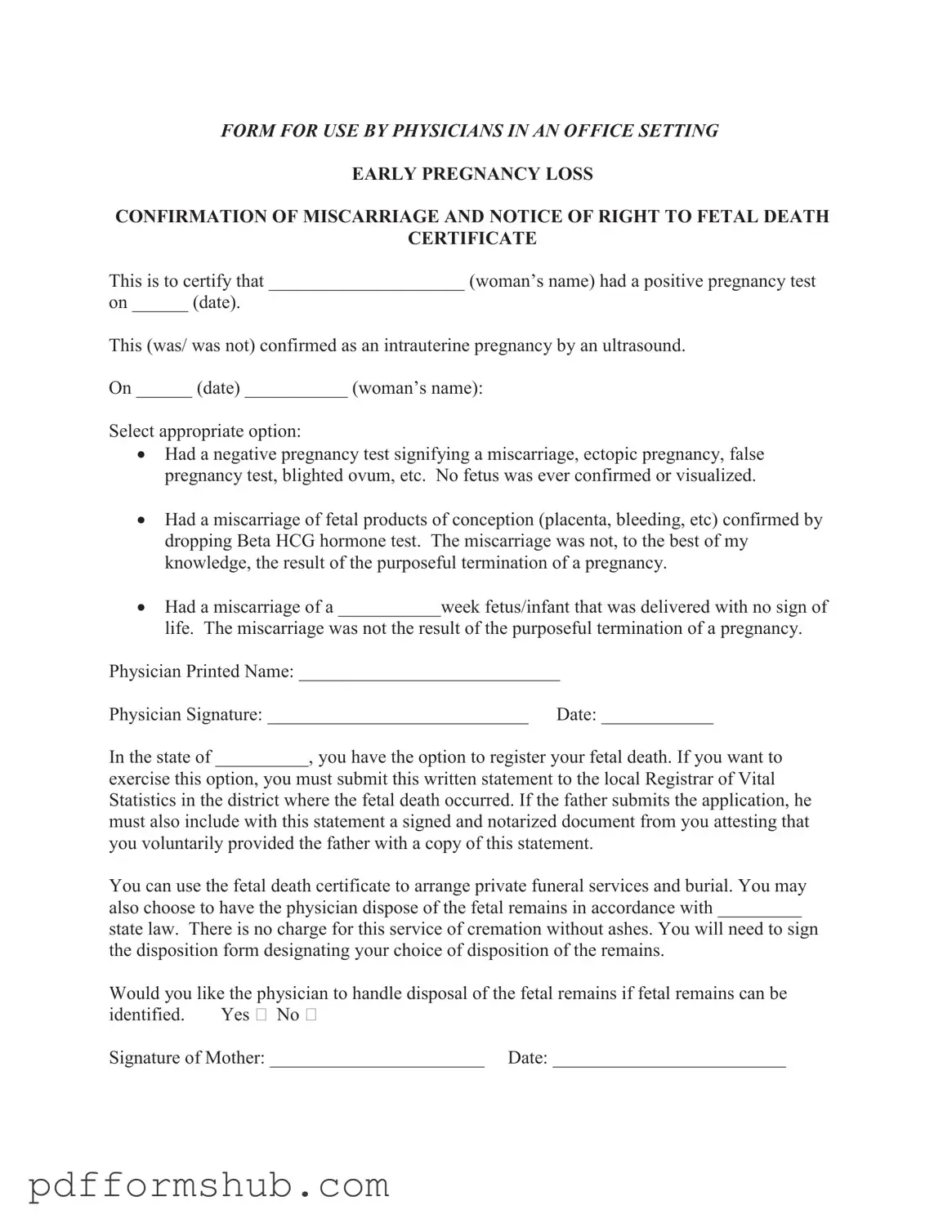The Miscarriage Discharge Paper form serves as an essential document for women who have experienced early pregnancy loss. Designed for use by physicians in an office setting, this form provides a structured way to confirm a miscarriage and outlines the necessary steps for women to take afterward. It begins with the physician certifying the patient's positive pregnancy test and detailing whether the pregnancy was confirmed via ultrasound. The form includes options for various scenarios, such as negative pregnancy tests indicating a miscarriage or an ectopic pregnancy, as well as confirmation of fetal loss. Additionally, it highlights the mother's rights regarding the registration of fetal death, offering guidance on how to navigate this process with local authorities. The form also addresses the sensitive matter of fetal remains, providing options for disposal in accordance with state law. Women can choose whether they want the physician to handle the remains, ensuring that their preferences are respected during a difficult time. The clarity and thoroughness of this form aim to support women through a challenging experience, providing them with the information they need to make informed decisions while honoring their loss.
